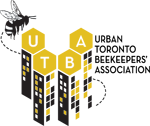Swarms
Ontario Swarm Season is typically May - July
Honeybee Swarms
Honeybee Swarms
What is a Honeybee Swarm?
A honey bee swarm doesn't simply refer to a large gathering of bees. When a colony swarms, it involves tens of thousands of bees leaving the hive in a frenzied movement, eventually settling on a nearby structure; like the truck pictured. From there, they will eventually move to a new nesting location once that has been decided by the swarm.
Swarming is a natural method of reproduction for bee colonies, and it's an inherent part of honey bee behaviour. Although a swarm may appear intimidating due to the sheer number of bees, they are generally quite calm. In urban beekeeping settings, the main concern with swarming is the perceived danger it poses to the public.
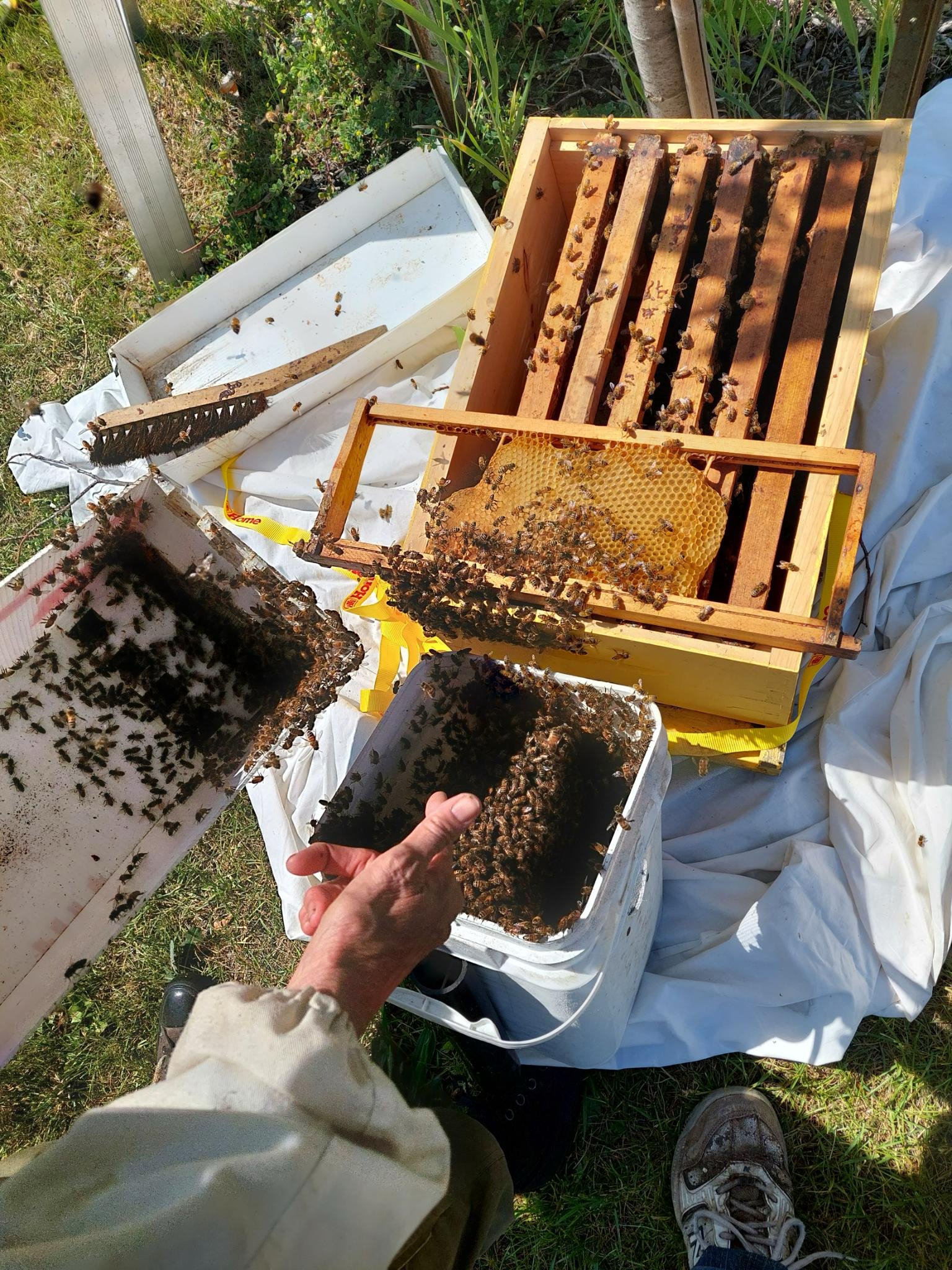
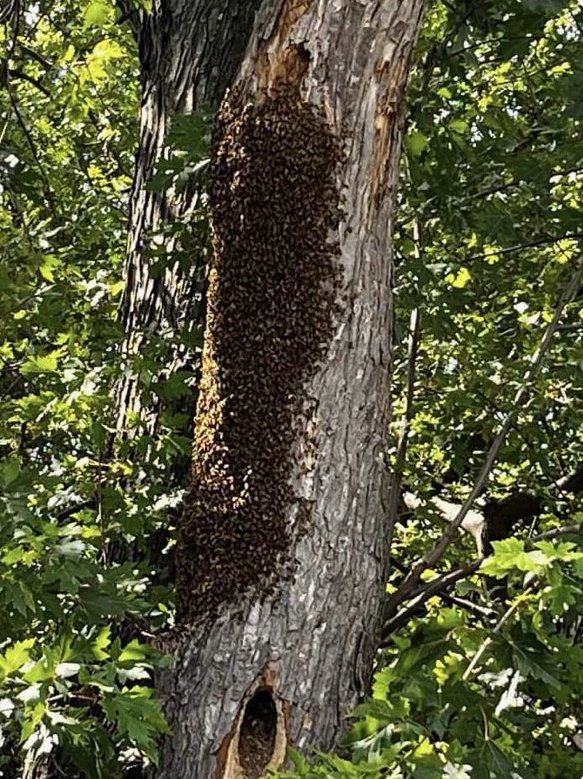
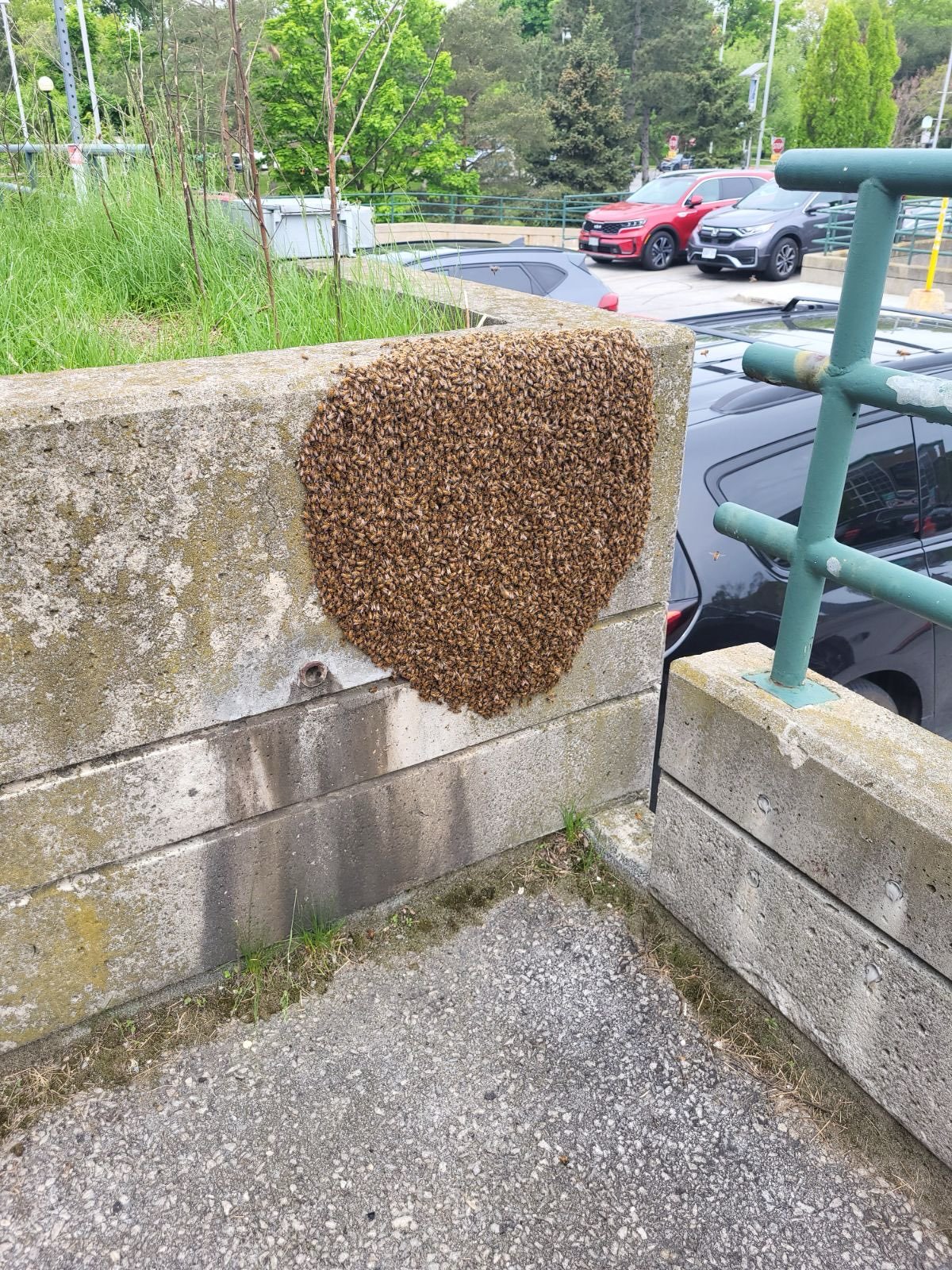
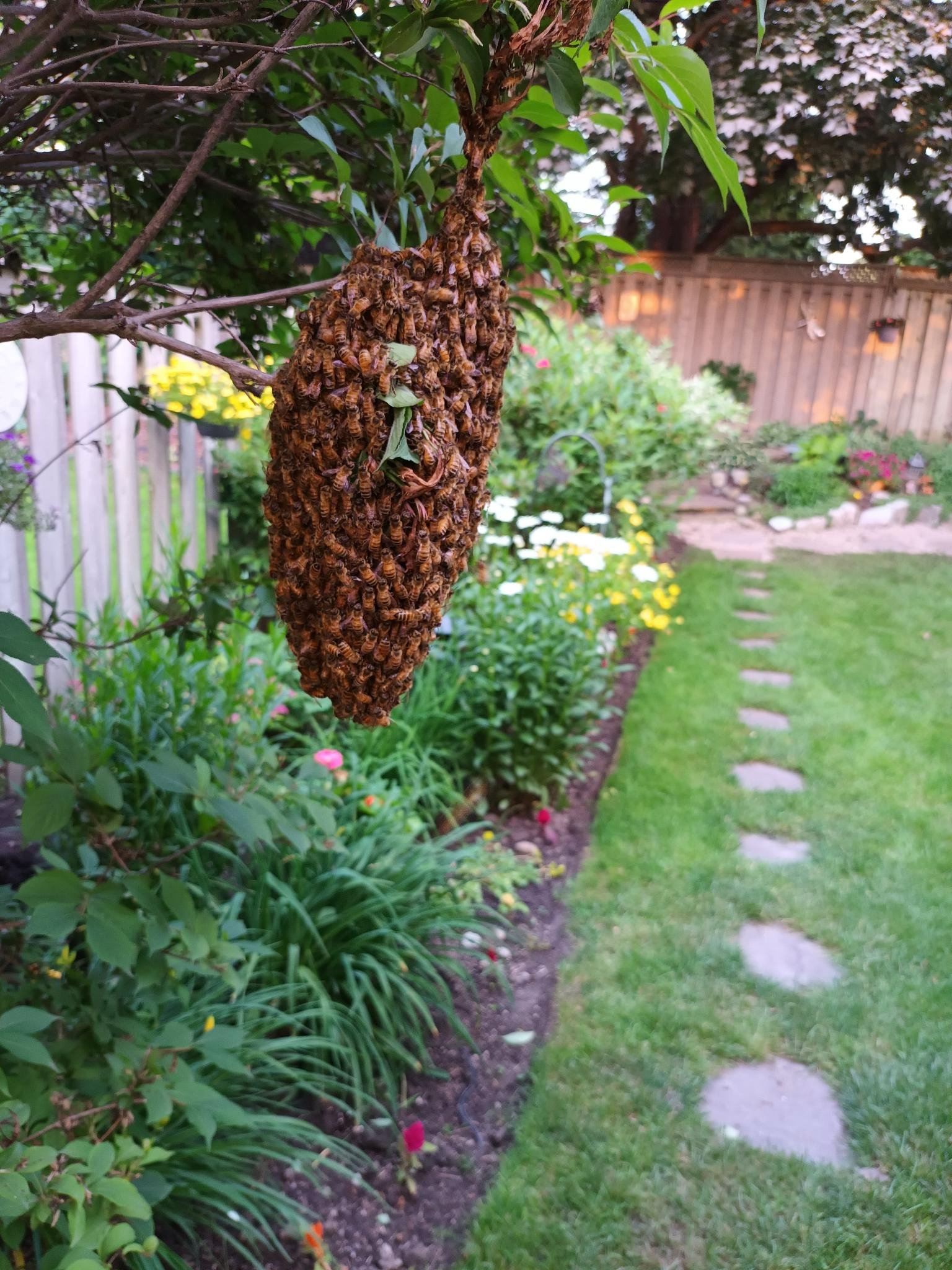
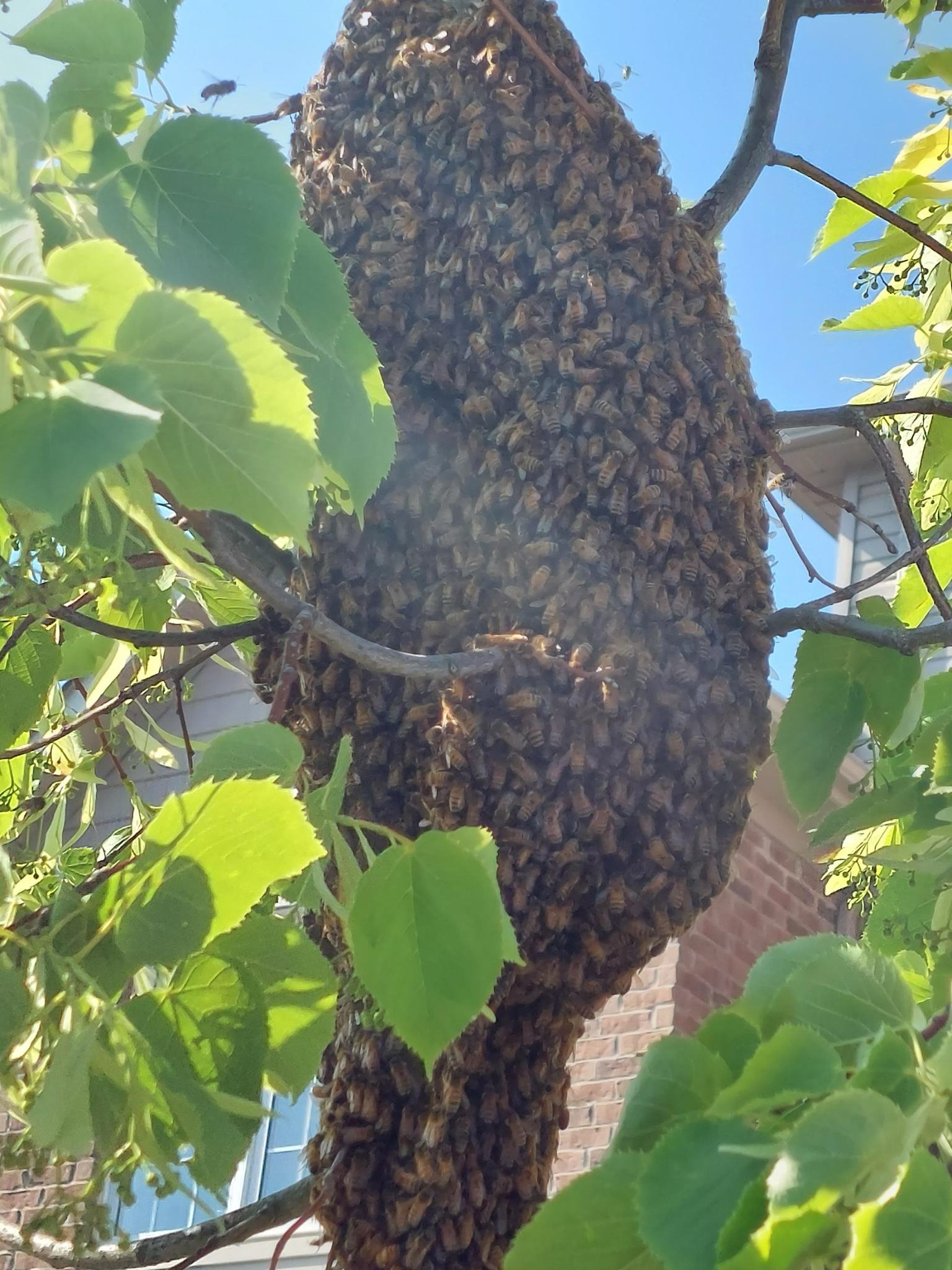
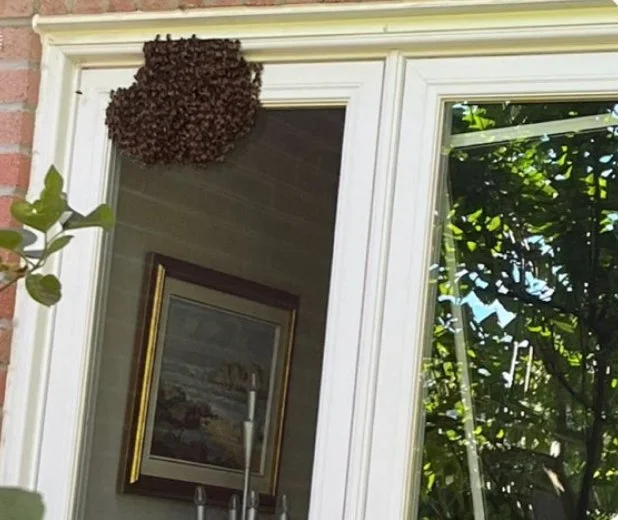
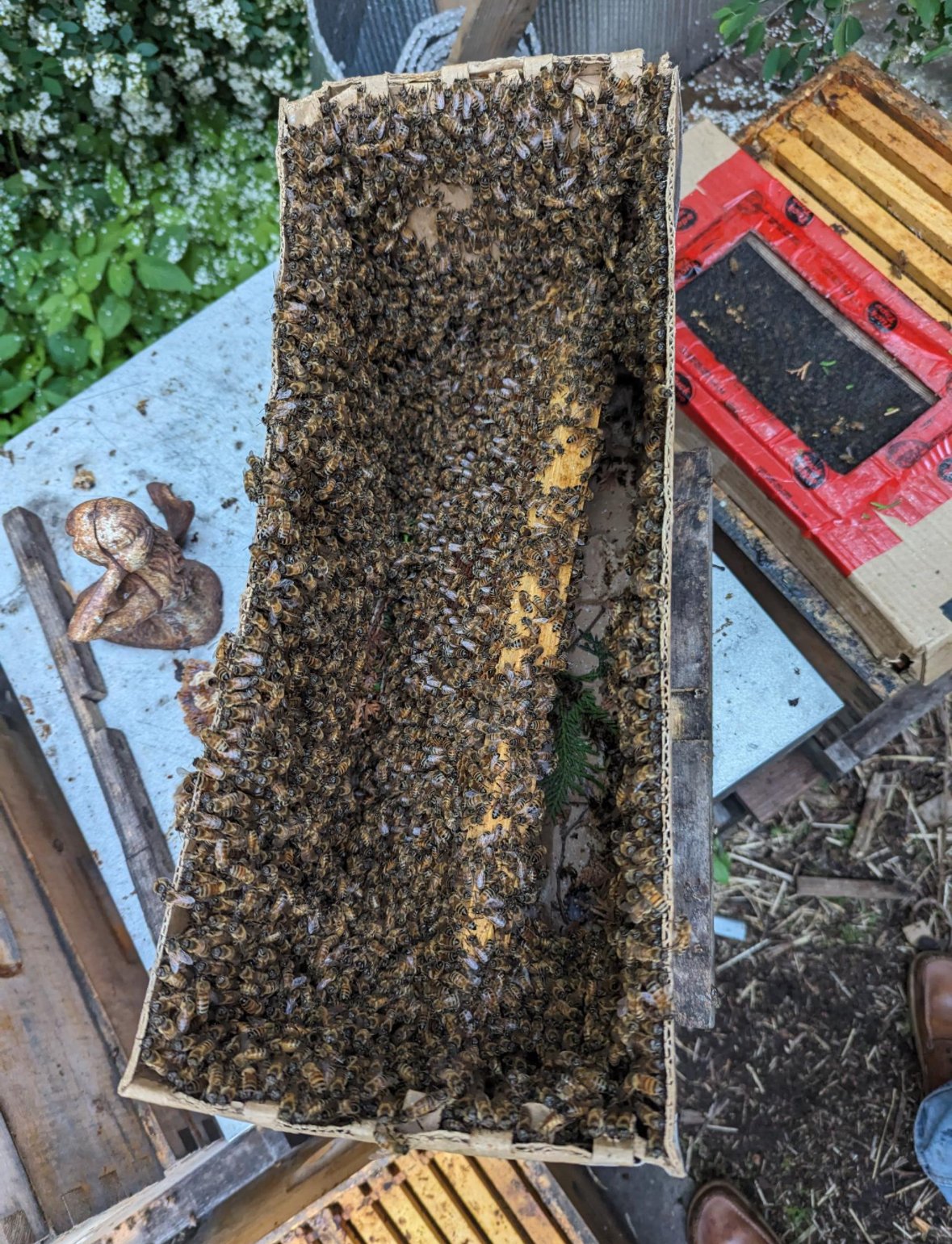
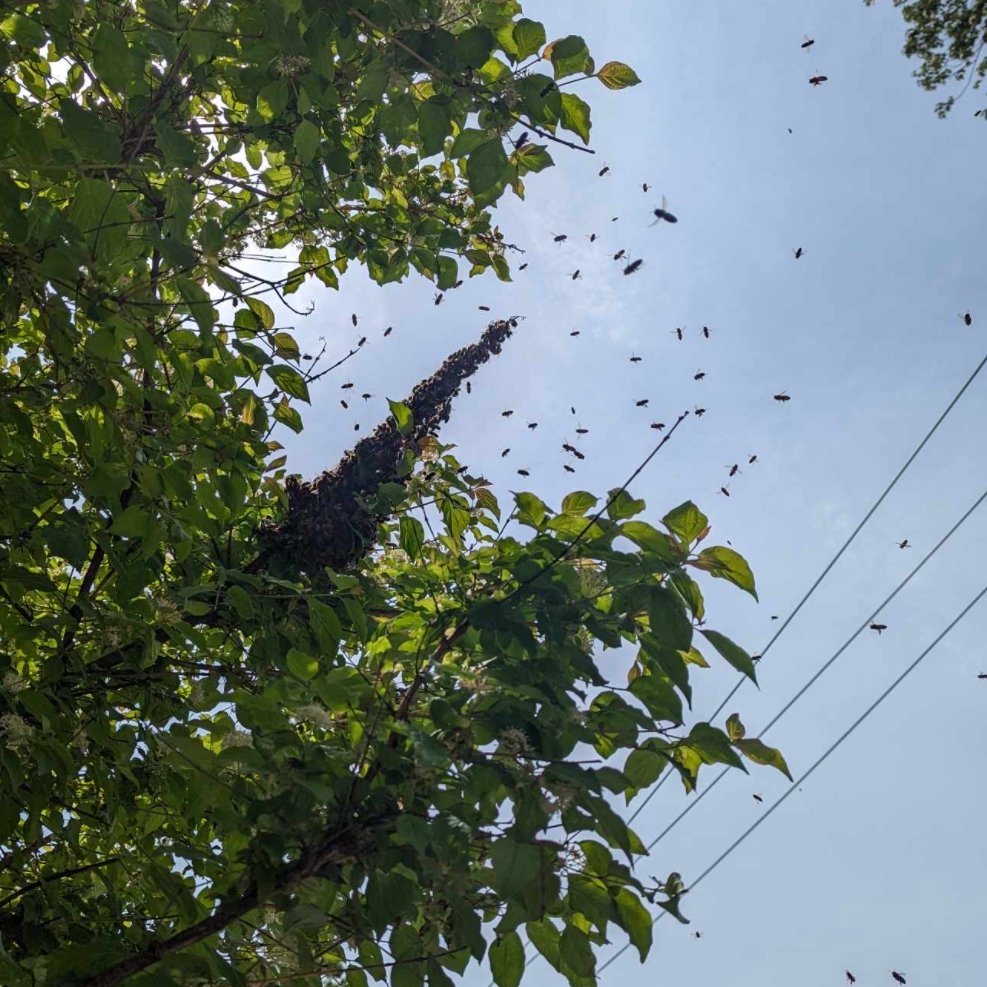
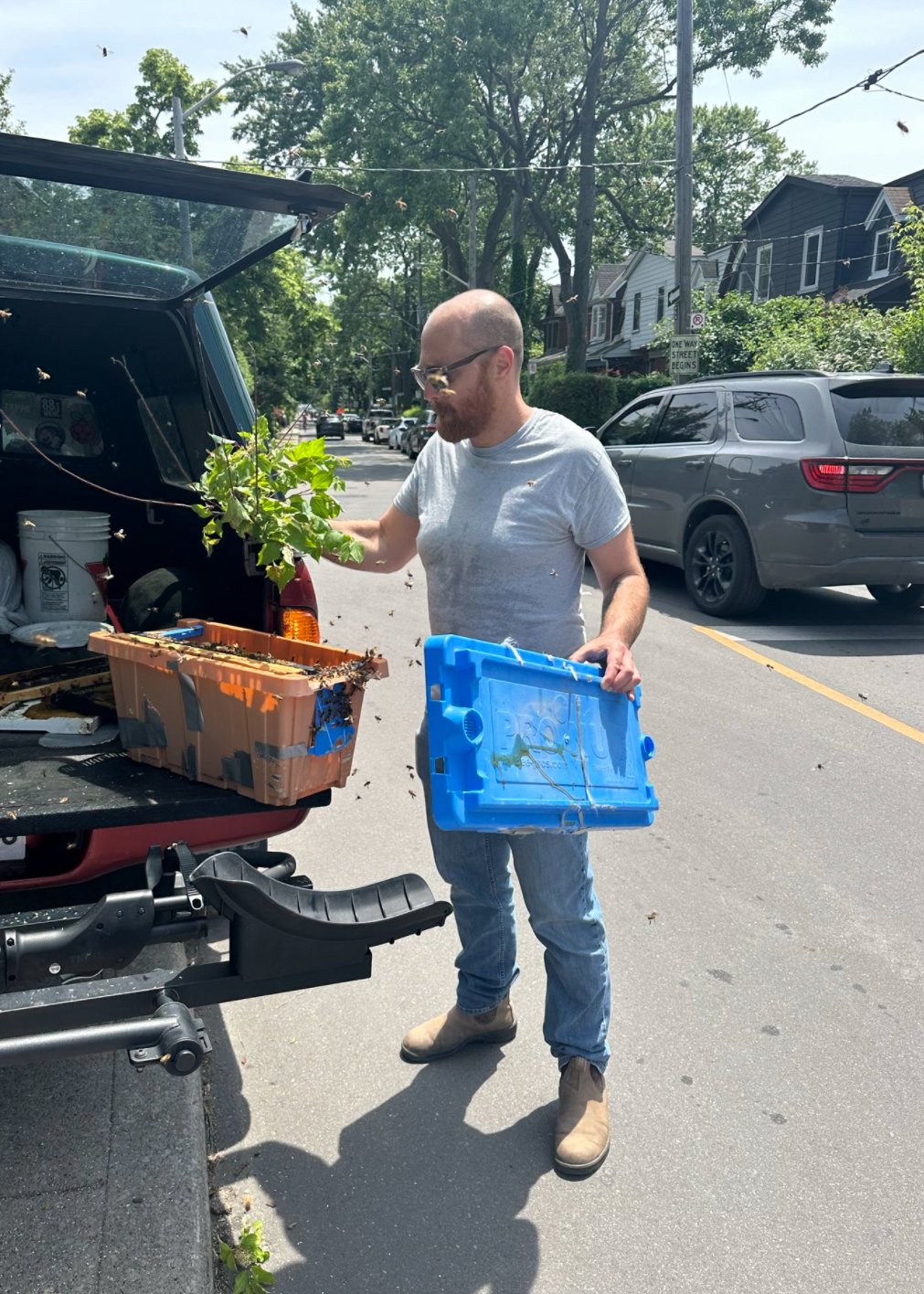
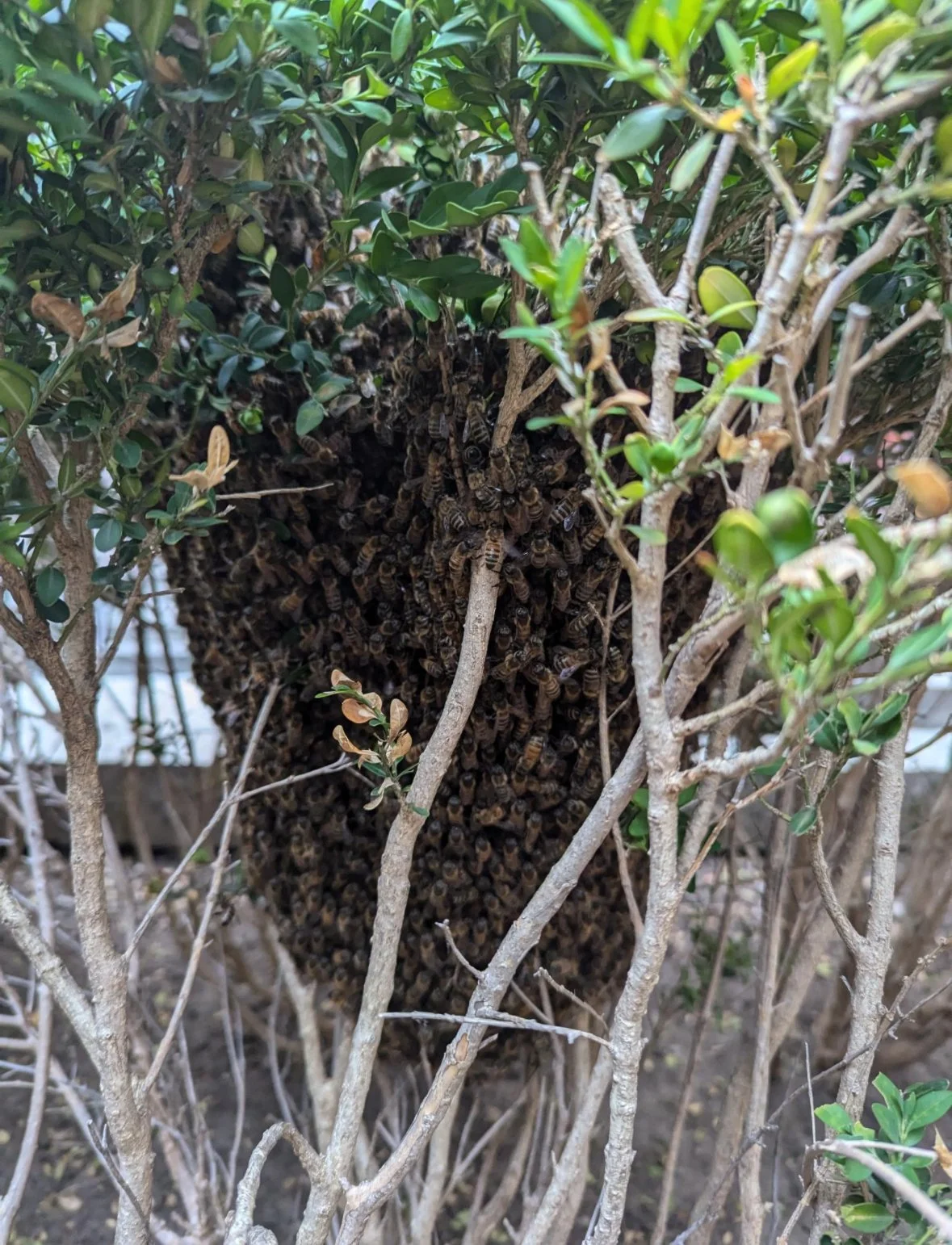
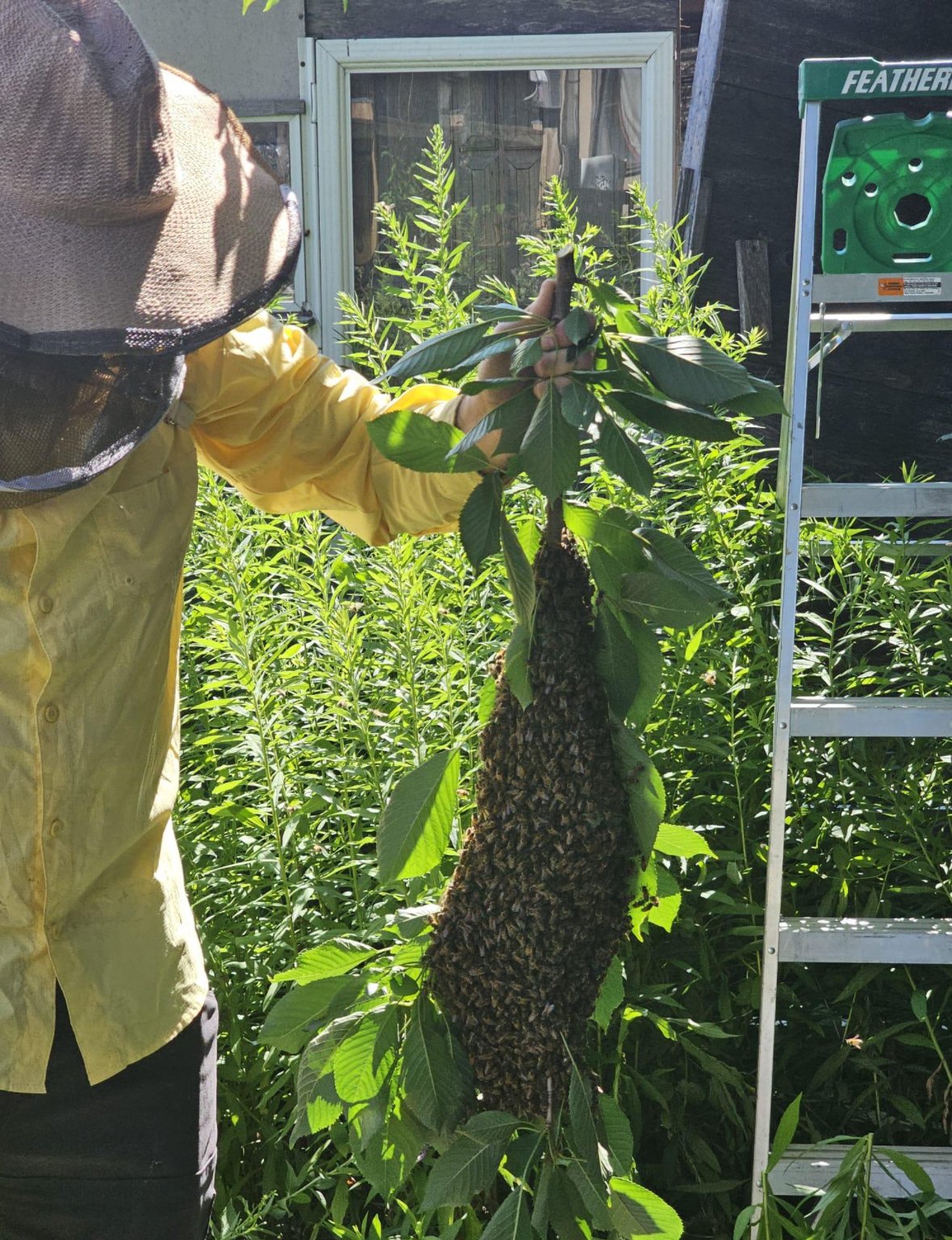
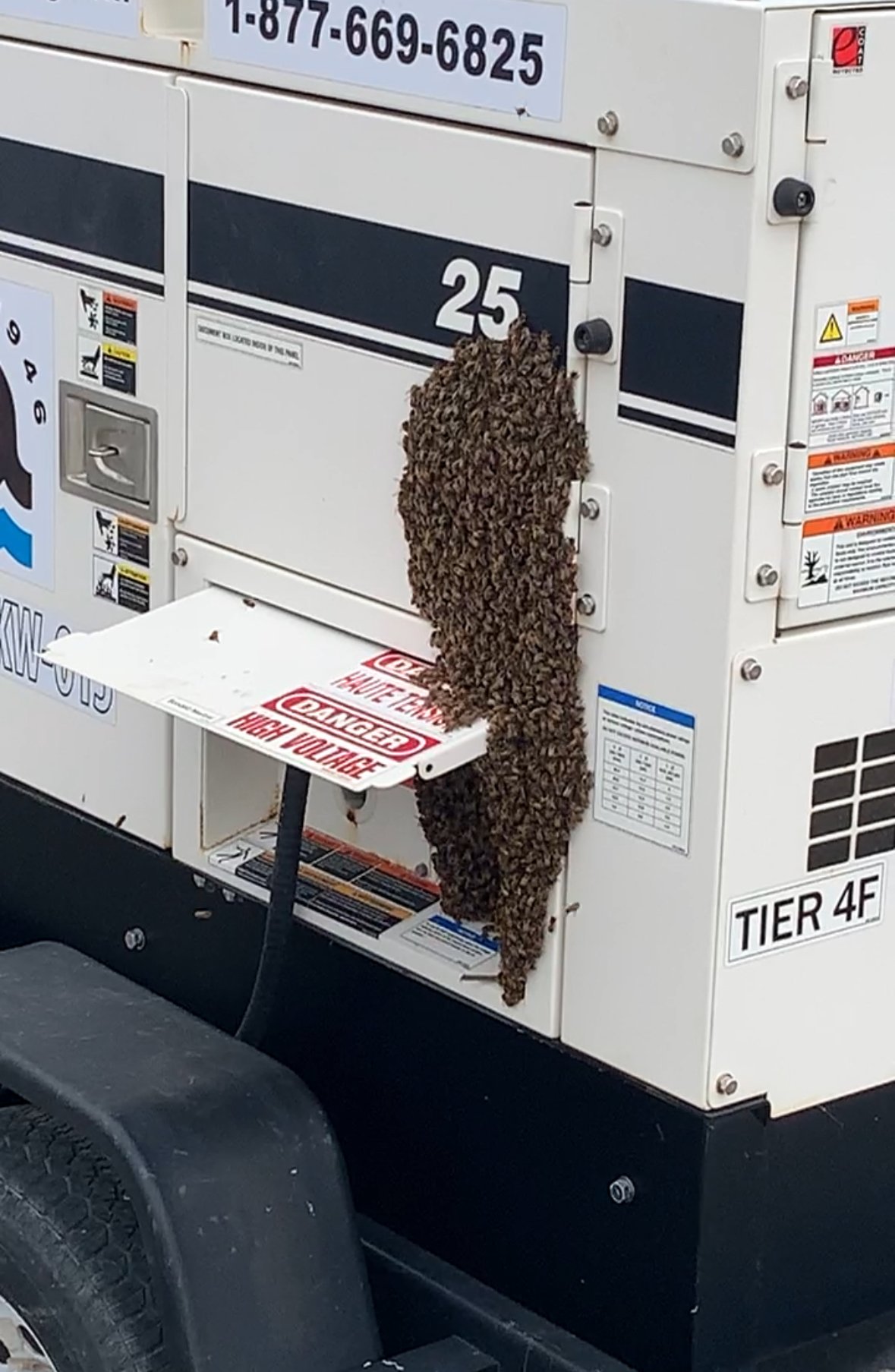
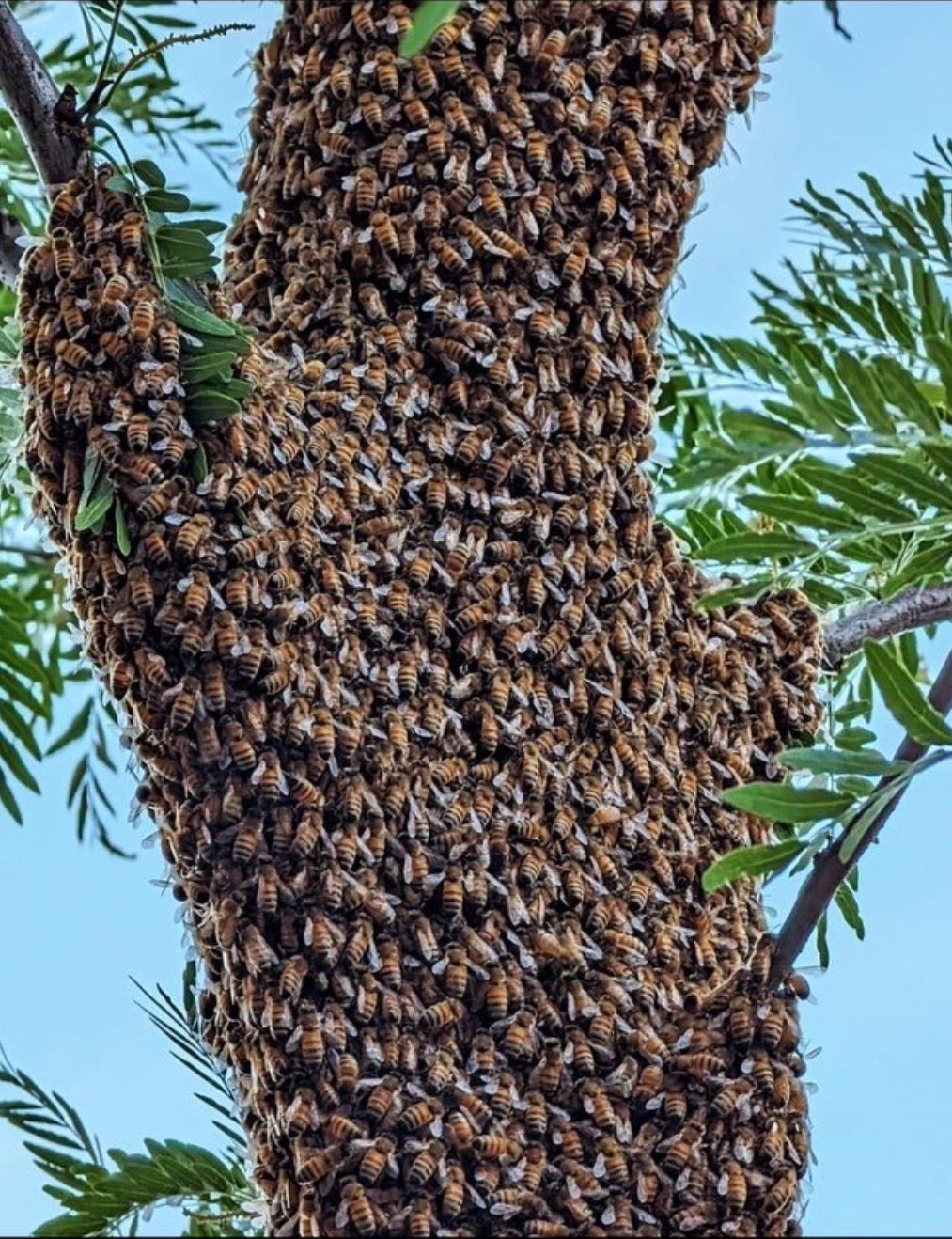
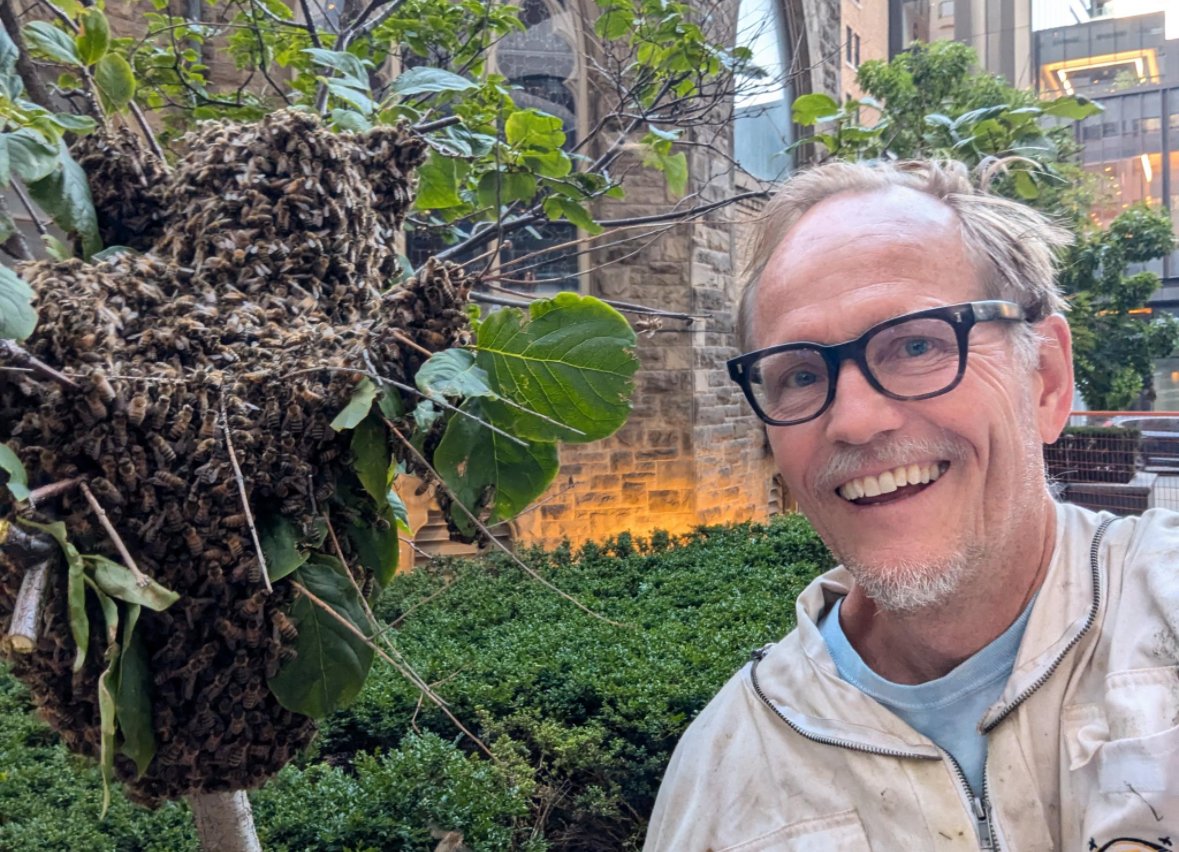
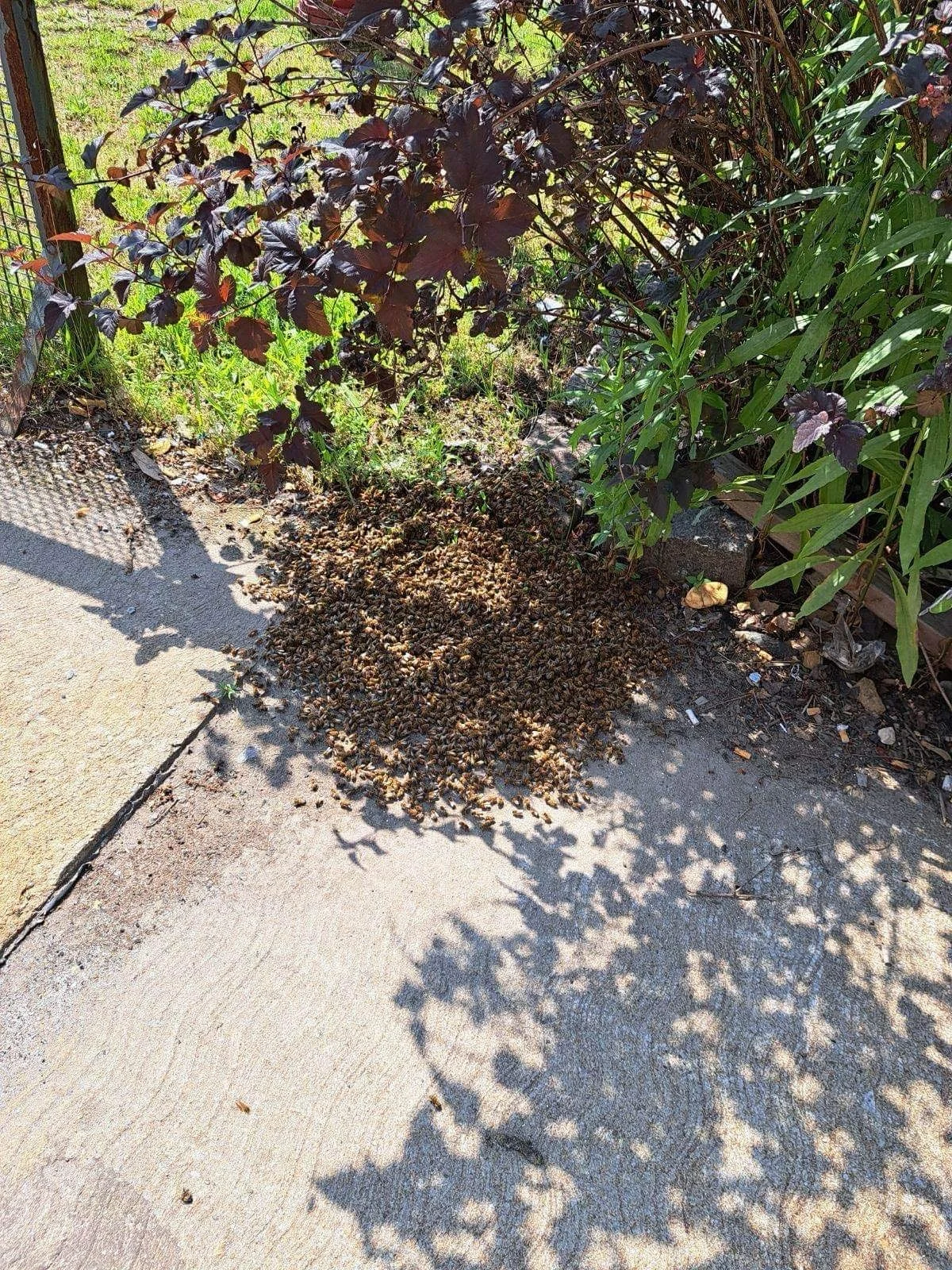
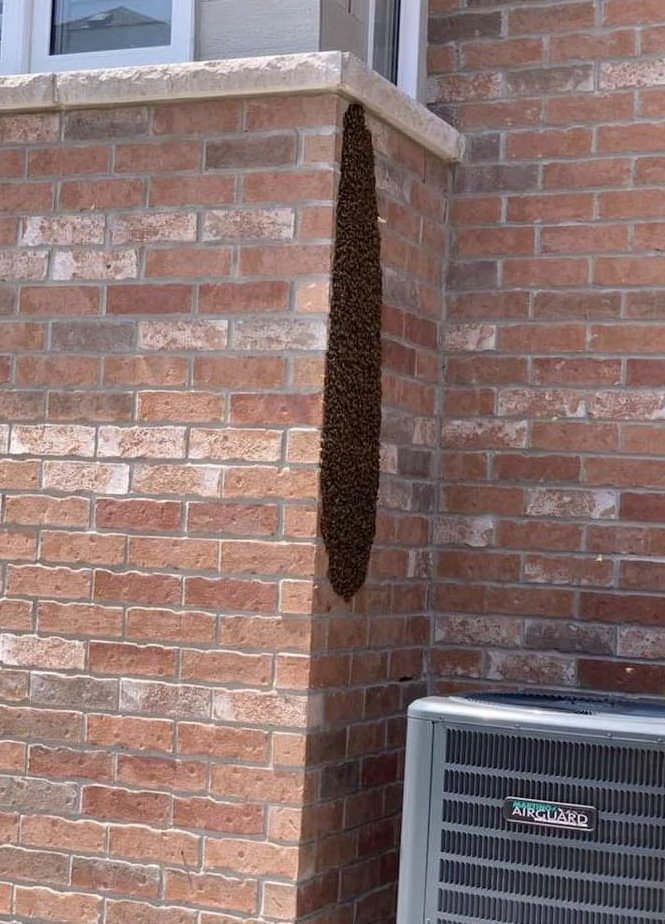
A Quick Look at Swarms vs. Nests
-
Honeybee Swarm
A honeybee swarm occurs when a large group of bees, including the queen, leaves their hive to establish a new colony, often forming a dense cluster while in flight. The bees typically hover together for a short period before settling on a temporary perch, such as a tree branch, where they remain until they find a permanent location for their new hive.

-
Wasp Nest
A wasp nest is typically an open, papery structure made from wood fibers mixed with wasp saliva, shaped like a honeycomb with hexagonal cells. It is often found in sheltered areas such as tree branches, eaves, or attics, and can house hundreds or thousands of wasps, depending on the species.

What should I do if I see a swarm?
A honeybee swarm is a natural part of the honeybee colony lifecycle and is not usually an emergency. In most cases the honeybees will move on in a day or two. Don’t approach the swarm. Although typically honeybees are docile there is always a risk of being stung. Observe from a distance.
If you have encountered a honeybee swarm please report it to the UTBA so we can send someone out to catch them.
However, if you know you have found a wasp or hornet nest, this is something our Swarm Catching members are not equipped to deal with. Please report the nest to the City of Toronto or a Licensed Pest Control Professional.
City of Toronto Policy on Wasp Nest Removal
Do Not Spray a Swarm. Swarms should be left alone until a member of the UTBA swarm team comes to retrieve them.
If you are seeing flying black and yellow insects in the fall coming out of a crevice or hole this is not a swarm and may not even be a honeybee. A variety of insects make their homes inside buildings. You may have honeybees, mason bees or they may be wasps. The removal of a colony of insects from behind a wall is specialized work, please contact a licensed pest control professional. It is always valuable to have photographs ready to help identify the insect.
Become A Swarm Catcher
Our Swarm team is ever growing and we are always looking for new Swarm Catchers to assist us by capturing and protecting honeybees in our Urban Environment. If swarm catching sounds like something you would like to do and be apart of, we would love to have you!
Not comfortable catching swarms yet? No problem! Experienced members of the team are always grateful to have a helping hand. Submit vour information here to be added to the swarm catching group.
Still have questions about swarm catching and joining the group? We are more than happy to answer them, email us at swarms@urbantorontobeekeepers.org
